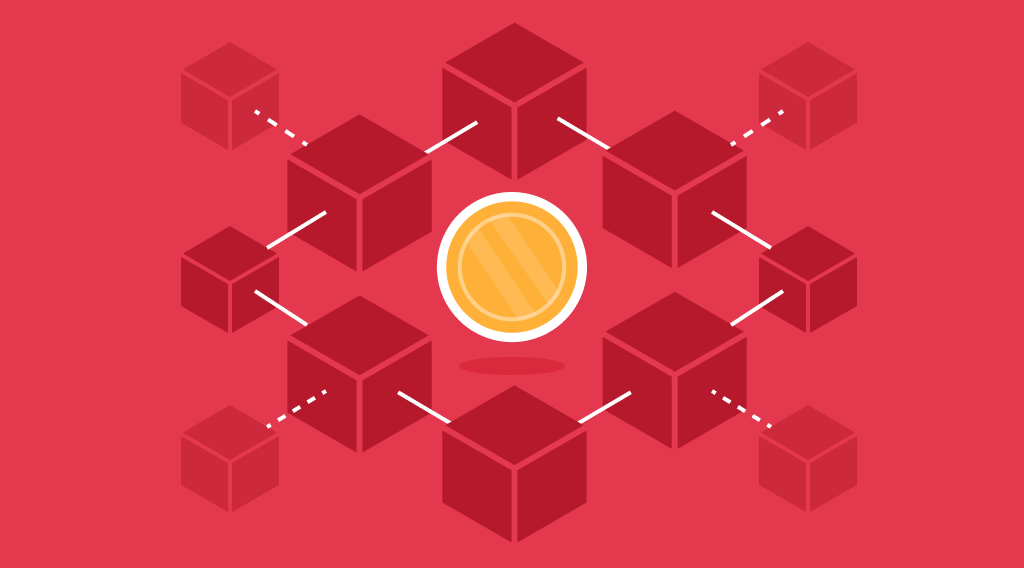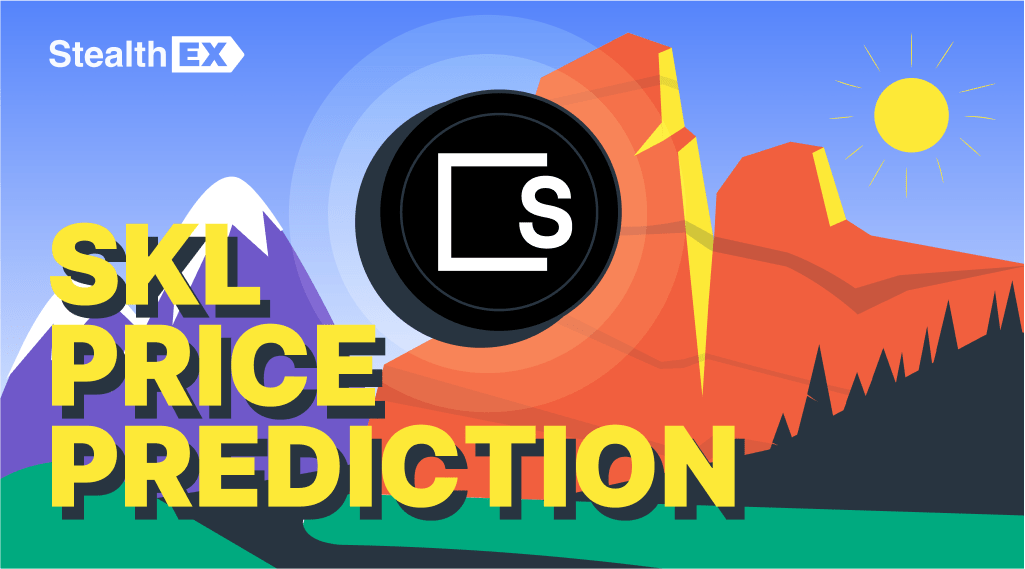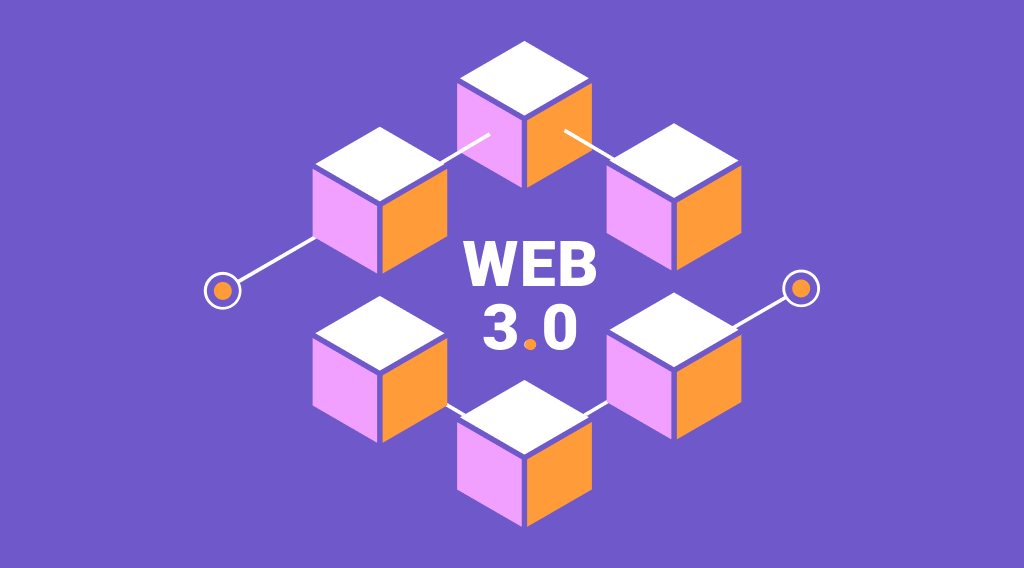Exchange SKALE Network (SKL) at the Best Rates
Instantly exchange SKALE Network at the best price and with the lowest fees on StealthEX. Free from registration, fast, and limitless SKL swaps. You can see for yourself how convenient it is.
SKALE Network (SKL) Price Statistics
Price (USD)
$0.01674712Circulating Supply
$5.7759BVolume (24h)
$5.4304MMarket Cap
$96.6852MLow/High 24h
$0.01662614 - $0.01705851Change (24h)
-$0.0000535
Skale Crypto: High-Throughput Environment for Decentralized App Development
There are a number of solutions that exist alongside Ethereum that aim to help the blockchain to process, scale, and use dApps based on it. One such crypto project is Skale. Skale Network is a Layer-2 scaling solution for the Ethereum network that enables developers to bypass congestion on the Ethereum mainnet by migrating development off of the main chain and onto adjacent, Skale-administered sidechains. Let’s take a closer look at Skale Network and SKL crypto and the project’s main features.
What Does Skale Network Do?
Skale Network is a decentralized, open-source, ‘elastic’ blockchain network made to scale Web3 apps. Skale chains are application-specific, adjustable blockchains that sit one tier above the Ethereum blockchain. They are also sometimes referred to as ‘dynamic shards.’ Skale chains, which function as private Ethereum-compatible smart contract platforms with quicker block times and higher transaction processing capacity per second, are available for rent by developers. Core developer Skale Labs claims that Skale chains are capable of executing rollup contracts, supporting decentralized storage, running machine learning algorithms through the use of the Ethereum Virtual Machine (EVM), and running full-state smart contracts. Skale Network hopes to enable Web3 apps to compete with traditional apps in terms of cost and performance by combining Ethereum with Web3.
High fees are one of the main problems the cryptocurrency sector is now experiencing, and it’s one of the main issues Skale tries to address. Every transaction on Ethereum, the world's best-performing DeFi platform, comes with gas fees. The issue with this structure is that it restricts the programmability options available to the developer. In essence, some EVM instances have grown so costly that they are no longer functional.
The idea of creating a convenient solution for scaling Ethereum, came about in 2017, while both Stan Kladko and Jack O'Halleran were trying to start a business in the cryptocurrency industry. They both aimed to develop decentralized applications, but they encountered comparable problems in terms of scalability and designing a user experience that wouldn't impede their expansion. Stan devised the first Skale architecture and mechanics to help scale the various applications he was developing. He and Jack discovered during their early work together that there might be a market for developing a new high-throughput layer that might complement Ethereum and help emerging dApps get beyond scaling obstacles.
Elastic Sidechains: Skale’s Key Feature
Sidechains, that Skale Network has embedded into its structure, provide a number of advantages when appended to main chains:
- Testing: Without running the danger of interfering with the main chain, sidechains allow developers to test out new and possibly unstable software. For example, in the event that a project crashes while attempting to deploy a new dApp iteration on the sidechain, the front-facing application running on the main chain is unaffected.
- Throughput: To ease congestion on the main chain, developers can install dApps on sidechains. For instance, Ethereum gas fees rise during periods of network congestion, increasing the cost and duration of transactions. By moving network activities off the main chain, sidechains save gas costs and enhance performance all around.
- Security: Sidechains are in charge of their own security because they are separate blockchains. When a hack occurs, just the sidechain is affected.
Skale Nodes and SKL Crypto
Skale Network provides the transactional activity on the network through a network of decentralized nodes, just as other public blockchains. Subnodes and Node Cores make up Skale’s nodal network. A node's owners can access an interface to withdraw, deposit, stake, or claim SKL tokens through each Skale Node Core, which also manages the node's computing and storage resources and keeps an eye on latency and uptime.
The Skale encryption protocol uses containerized subnode architecture within these nodes. The changing size of these virtualized subnodes promotes network elasticity.
Using the SKL token, the Skale Network provides services through a structure that combines governance procedures and financial incentives. On the Skale Network, the SKL token enables the following four primary functions:
- Staking and security: Delegators or holders of SKL tokens stake their tokens in validators. By confirming blocks, carrying out smart contracts, and maintaining network security, these validators run the Skale Network. They are compensated with SKL cryptocurrency for their work as validators.
- Payment: Elastic Sidechain subscriptions are paid for by developers using SLK tokens.
- Reward: From the subscription fees developers pay and the inflation of tokens into the network, delegators and validators alike receive SKL crypto premiums.
- Governance and voting: All economic parameters on the Skale Network are governed by on-chain voting, which is made possible by the SKL token.
Since SKL is an ERC-777 token, delegators are not required to submit their tokens to smart contracts and it retains backward compatibility with ERC-20 platforms. Rather, delegators keep their tokens in a wallet of their choosing and give a safe key to the staking provider. This small modification to the governance protocol adds non-custodial delegation, which strengthens the security of the Skale Network even further.
Can Skale Reach $1?
It’s possible. PricePrediction experts believe that SKL coin can reach $1 by 2032. Additionally, you can read about experts’ opinions and explore various Skale price predictions.
Is Skale a Good Investment?
It may be if the project continues to grow and more projects continue to build on the Skale Network. In Q3, Skale's daily average transactionsincreased by 241%, which means that the blockchain is developing. This is awesome news and the low price provides a possibly good opportunity for investments. However, as with any cryptocurrency, SKL coin is a risky investment that requires careful consideration.
How Much Will Skale Network Coin Be Worth in 2030?
Various experts give various estimations. For instance, DigitalCoinPrice crypto analysts believe that by 2030, SKL token will trade at $0.18-0.3.
What Is the Future of Skale Token?
Market analysts and experts who are less optimistic predict that, according to their technical analysis, SKALE token is expected to cross a price level of $0.15 in 2028. However, Skale continues to grow and evolve and can cross this threshold way sooner under favorable market and economic conditions.
How to Buy SKALE (SKL) Coin?
StealthEX is here to help you buy SKL coin. You can do this privately and without the need to sign up for the service. Our crypto collection has more than 1500 different coins and you can do wallet-to-wallet transfers instantly and problem-free.
Just go to StealthEX and follow these easy steps:
- Choose the pair and the amount you want to exchange — for instance, BTC to SKL.
- Press the “Start exchange” button.
- Provide the recipient address to transfer your crypto to.
- Process the transaction.
- Receive your crypto coins.
Follow us on Medium, X, Telegram, YouTube, and Publish0x to stay updated about the latest news on StealthEX.io and the rest of the crypto world.
Don’t forget to do your own research before buying any crypto. The views and opinions expressed in this article are solely those of the author.
SKALE Network Price Chart
SKALE Network (SKL)
Related Articles

Crypto World
What Is DeFi in Crypto? Is Decentralized Finance the Future?
What is DeFi in crypto world? Is DeFi a good investment? Is Decentralized Finance the future? What are DeFi coins?

Price Prediction
Skale Price Prediction: Can SKL Price Reach $1?
Based on realistic Skale Network price prediction, it is forecasted that the maximum price of SKL crypto by 2030 will be $0....

Crypto World
What Is Web3? The New Internet Era Starting Today
What is Web3 technology? What does Web3 mean? What is Web3 used for? Can you invest into Web3.0 crypto? Web2 vs Web3
StealthEX.io uses cookies to ensure you get the best experience. Please read our cookies policy